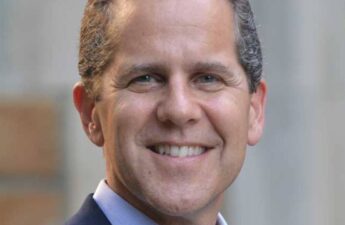Listen To This Episode:
In this episode of the “Fed Watch” podcast, I cover topics we were unable to cover on the weekly livestream. I go over the importance of the Sarah Bloom Raskin-withdrawal, what the Fed is thinking by signaling hawkish policy so aggressively and do a deep dive into the emerging food crisis that could result in a continental-scale famine.
“Fed Watch” is a podcast for people interested in central bank current events and how Bitcoin will integrate or replace aspects of the traditional financial system. To understand how bitcoin will become global money, we must first understand what’s happening now.
Bye-Bye Raskin
I mentioned Sarah Bloom Raskin in the previous episode but here I go back over that thread and try to make it crystal clear what I think the withdrawal of her nomination tells us about the real power-politics at play.
Raskin is a progressive globalist who believes in using the central bank to further a Davos agenda. Her bid for Fed vice chair didn’t work. I think it makes the distinction between “Team Fed,” including Powell and Wall Street, versus the globalists of Team Davos (Democrats, Neocons and the European-project people) perfectly clear.
Federal Reserve Messaging
Next, I introduce the concept of the Fed credibly promising to be irresponsible, this time on the hawkish side. In 1998, Nobel Prize-winning economist Paul Krugman, said of the Bank of Japan’s inability to stimulate out of a stagnant economy that they needed to “credibly promise to be irresponsible;” go big or go home. The Fed is now attempting to be irresponsible in the opposite direction.
The Fed will come right out and say that their policy works through inflation expectations. Typically, they talk about how much quantitative easing they will do, in an attempt to raise expectations of inflation, which makes people act as if inflation were higher, manifesting that inflation in the future. Right now, it seems as if they are trying the reverse.
Ask yourself, how would the Fed lower inflation expectations? They have to act hawkishly, and talk about raising interest rates and quantitative tightening. That is what we are seeing now. Everyone sees the yield curve inversions happening. They know the world is sliding into war and deglobalization, two things that make people expect higher prices in the future. They have to attack those stubborn inflation expectations with very hawkish rhetoric in order to tame expectations back to “normal.”
Yield Curve Inversions
In this section, I explain the yield curve, the inversions right now and what they mean. I’m not sure if there will be a video version of this episode on Bitcoin Magazine’s YouTube channel.
Emerging Food Crisis
In the last section of the podcast we discuss the article “War in Ukraine sparks concerns over worldwide food shortages” from France 24. In it, they point to the wheat shortage from the war in Ukraine that is already causing food shortages in North Africa.
The article states, “The UN Food and Agriculture Organization (FAO) estimates that an additional 8-13 million people worldwide face undernourishment if food exports from Ukraine and Russia are stopped permanently.”
The article is good at summarizing one aspect of the looming food crisis: a shortage of wheat. What they do not even mention is the shortage of fertilizer. Both of these things together threaten a continental-scale famine where that number of eight to 13 million new people facing hunger is probably 10 times that.
Source: https://bitcoinmagazine.com/markets/yield-curves-wall-street-and-food-shortages



